
96 kHz vs 48 kHz vs 44 kHz – Best Sample Rate for Audio?

What is (really) the Best Sample Rate for Making Music in a Home Studio?
Are we missing out by not recording our music at really high sample rates like 96 kHz or 192 kHz?
Gear manufacturers make us think that we need the most power gear and highest sample rates to “unlock” pro sounding home studio recordings…. but is this really true? Can we actually benefit sonically from recording at these really high sample rates? Is recording at higher sample rates what separates a pro recording from an amateur one?
All these answers and more are below – and if you don’t want to read, jump down to the video!
What is Sample Rate?
Let’s start by talking about what sample rate is:
Sample rate is the number of times we “sample” a continuous soundwave per second. The standard for audio is 44.1 kHz sample rate, which means 44,100 samples are measured for every second of audio being recorded. And when I say measured, all I mean is that we will record what the amplitude is for the audio signal.
Common Misconceptions About Sample Rate and Audio
Now there are so many misconceptions about sample rates being “better” or producing more accurate sound, but those are largely false. A 44.1 khz and 96 khz sample rate file will accurately capture all the frequencies that us humans can hear which is from about 20 – 20khz. You might think that if we can sample the audio waves at more spots, that we would be able to reconstruct the waveform better in this hearing range…. But that isn’t true at all. Not one bit.
This is because of something called the Shannon Nyquist theorem, which tells us that we can PERFECTLY – yep, perfectly reconstruct any band limited audio signal as long as we sample the audio greater than 2X the highest frequency. So if you want to perfectly reconstruct a 20 khz sine wave, you need to sample it greater than 40 khz. The math is pretty intense and completely beyond the scope of this video.
In more nerdy terms, anytime we sample audio greater than twice the highest frequency, there is only one unique solution to connect all the data points together.
There are basically three benefits to recording at higher sample rates.
- We can capture higher frequencies above human hearing
- We can improve our amplitude resolution – which isn’t as cool as it sounds
- Higher quality editing capability, and this one is more important than you might think….
Higher Sample Rate Benefit #1: Can capture higher frequencies
Higher sample rates allows us to capture higher frequency data above 22.05 kHz. In fact, if we sample at 96 kHz, we can reproduce audio signals as high as 48 kHz, which is more than twice as high as humans can hear. But animals like dogs, cats, and bats can certainly hear those frequencies! So if you plan to make music for bats, then this is a necessity!
But at 44.1 kHz, we already can perfectly record beyond what any human can hear up to 22.05 khz.
So is there any reason WHY we might want to record with sample rates higher than the audio standard 44.1 kHz? Let’s talk about this because there is more to it than meets the eye…
Now, something interesting happens when using a 44 kHz sampling rate to record audio that beyond 22.05 kHz. Instead of only having one way of connecting the data points, there can actually be more than one “correct” solution for how to fit the samples. This causes some pretty nasty sounding artifacts that we do not want in our music – and you probably have heard this term before. It’s called aliasing.
Much like how you might have multiple aliases online (Facebook, Instagram, Tik Tok), the audio signal can now also have multiple aliases. And each of these “aliases” are mathematically indistinguishable from the original audio that we recorded.
What Does Aliasing Sound Like?
So what does it sound like? It sounds like strange, harsh and brittle tones that are added to our audio signal. Here is an example:
This audio sample was created by lowering the sampling rate from 44.1 kHz to 2 kHz sample rate. All frequencies above 2X the sampling rate get “folded back down” into the audio instead of being filtered away causing these unwanted artifacts that frankly sound pretty terrible!
But when we play digital audio back from our DAW it has to be converted from digital back to analog, so the speakers can understand what to play. To do this, we use a digital to analog converter or DAC. These converters have an anti-aliasing filter which essentially is just a low pass filter to remove all the frequencies that might alias back down into our music and cause those unwanted inharmonic artifacts.
How do we avoid aliasing?
Early on, the best strategy for minimizing aliasing was to record at higher sample rates. This moved the potential for aliasing much higher in the audio frequency range. If aliasing occurs once we have frequencies that exceed half of our sample rate, we have more room to filter out these aliasing artifacts as we increase our sampling rates.
For example, if we record at 96 kHz, we can generate frequencies up to 48khz – about three times the highest frequencies that humans can hear before any aliasing begins. AND when it does begin to alias, it has much farther to go before it gets into our hearing range compared to lower sampling rates.
Benefits of Higher Sample Rate Audio
One benefit of working at higher sample rates is that we can improve our amplitude resolution and more closely measure where the peak heights are in our music.
This is exactly what true peak metering does – it oversamples the audio to more closely detect where the actual peak height IS when it gets converted from digital to analog. This is because when we fit all the digital samples together into a waveform, our peak can sometimes be above the amplitude of the sample itself and occur in between the samples. And you might have heard of this before – this in between or INTER sample peak can be more accurately measured at higher sample rates. Many limiters and meters offer a true peak detection which essentially just upsamples our music under the hood to more closely measure the peak amplitude. These ISPs aren’t really anything to lose sleep over and I find that they are pretty hard to hear. In my experience, being able to more carefully measure intersample peaks didn’t really lead to an improvement in audio quality. So in this regard the increased sample rate doesn’t really improve the quality of our music.
Another benefit, and one that I was really surprised about, was the improvement to audio editing and time stretching. Higher sample rates can make a noticeable improvement in this regard (see the video below for examples).
Most of the time, people use time stretching to make all of the elements of a song perfectly in time with each other. But from my experience, this usually causes audible artifacts to be added to the audio. In some circumstances, these artifacts can take away from the listening experience and degrade the audio quality more than if the mistake was just kept.
Unfortunately, some genres have a track record of overly tight and perfect sounding edits (pop, rock and metal come to mind).
Now, I was very skeptical about higher sample rates and the improvement to timestretching quality, but I was very wrong.
I did a blind shootout between a guitar recording that was timestretched at 96 kHz and 44.1 kHz using the MPEX complex algorithm in Cubase 11 (because it sounded extremely natural to me) and I was able to pick out the 44.1 time stretched audio 7/7 times with 100% success because of the obvious decrease in audio quality from timestretching at lower sample rates. This was enough for me to know that you can in fact hear a difference and timestretching at higher sample rates results in a better, cleaner, and more transient rich sound.
What about the downsides to recording music at higher sample rates?
Well, the biggest problem is the increased CPU load on our computers. If you are working with large sessions (which I tend to mix songs with 100+ tracks), it can be very hard to play back the audio without it skipping or glitching. And if my session is doing that, it makes it close to impossible for me to produce a high-quality mix or master for the bands and artists I work with and that is the most important thing for me. So, for really large sessions recorded at 96 khz, I’ll downsample the files to 48 kHz to make them playback nicely if adjusting my buffer settings isn’t enough to keep the playback smooth.
Something else worth mentioning here that I will go deeper into down the road, is that the frequency resolution of our meters and spectral analyzers will all be reduced as we need to collect more samples of audio now at these higher sample rates. I’ll discuss that more in another video.
Finally, the last downside is that higher sample rates produce files that are significantly larger than lower sample rate files.
Going from 48 khz to 96 khz will double your file size. But with file storage getting cheaper and cheaper, this is becoming less of a problem for many people.
Main Conclusions
So, to quickly recap, there are some advantages to recording at higher sample rates, but most of the advantages can be solved other ways while also reducing our CPU load. For example, reduction of aliasing can be achieved using plugins that oversample audio vs running an entire session at 2X or 4X the standard sample rate of 44 or 48 khz.
Improving amplitude resolution at higher sample rates is also typically handled by using meters and spectral analyzers that offer oversampling or “true peak” metering. Again, this gives us the benefit of improved amplitude resolution without needing to run our sessions at higher sample rates and thus allowing much smoother workflows and less cpu usage.
Finally, a drastic improvement to the quality of the audio is made when you perform time stretching or edit audio. There is a significant reduction of extremal artifacts)
Now, is recording at 96 khz vs 44 what separate pro sounding music from home studio recordings? No, not at all. The sample rate differences are such a small part of the overall picture that goes into making a great sounding song. I would be willing to say that almost every other decision when it comes to recording and mixing like picking the right microphone to use, setting the right attack and release times on your compressors, taking the time to find the best mic position, having fresh strings on your guitar or new drum heads on your drums, and making sure all the instruments are in TUNE will make a much bigger impact to the end result of your music than recording at a higher sample rate.
In my opinion, the only significant benefit to higher sample rates is the benefit gained when time stretching and editing your songs. So if you plan to do that, you might want to consider recording at higher sample rates, perform your edits, then downsample to a more reasonable sample rate that doesn’t eat up all your CPU.
And if you are looking for a really good sample rate converter to use exactly for this kind of thing, I have a great one in my favorite free plugin guide, so be sure to grab that before you leave today.
Download My Favorite Free Plugins Guide:If you want to go deeper into this topic, I go over all this and some extra examples in the video below! I’ve included timestamps you can use to jump to the most important parts.
⌚TIMESTAMPS⌚
00:00 – Intro
00:51 – Download My Favorite FREE Plugins Guide!
01:33 – What Is Sample Rate?
04:04 – There are 3 advantages for recording at 96 kHz sample rate
05:57 – The Shannon-Nyquist Theorem
06:23 – WTF Is Aliasing and What Does It Sound Like?
07:14 – How to Minimize Aliasing?
08:58 – How to Minimize Aliasing at 44 and 48 kHz Sessions
10:12 – Sampling Rates and Amplitude Resolution
10:58 – True Peak Metering
11:21 – What Are Intersample Peaks (ISP)?
13:00 – When Higher Sample Rates Make A Difference
15:14 – Do This If You Plan To Do Lots of Edits!
15:41 – Results of My Blind Shootouts
16:54 – Hear the Difference Between the Time Stretching Algorithms
21:37 – Summary of Main Points
24:10 – What Separates a PRO Recording from an Amateur
25:11 – Download My Favorite FREE Plugins Guide 🎁
Like this video?
👇👇👇
💥COURSES💥
🎓Complete Home Studio Mastering (💲10% OFF!): bit.ly/3q5HGZr
🎓Edit Vocals/Guitars/Drums/Bass Like a Pro: bit.ly/3vQ4dg4
💥GEAR💥
📹Canon 77d: amzn.to/2BmN6sq
📷Sigma 18-35 mm Lens: amzn.to/2CY53hY
🎙Shure Beta 57 Microphone (Video): amzn.to/3prXseo
🎛 RME Babyface Pro FS (Interface): amzn.to/3hoBtTy
🗜Boom Stand for Mic: amzn.to/2YYjn0O
💡Ring Light: amzn.to/2Yj6qzB
💥SOCIAL💥
📹 Twitch (Watch LIVE!): twitch.tv/raytow…
🔗 Facebook: facebook.com/ray…
📷 Instagram: instagram.com/ra…
💥CONNECT💥
👋 Private Community: bit.ly/hsftgroup
⭐ Blog: www.raytownprodu…
📧 E-mail: bobby@raytownpro…
💙 Website: www.raytownprodu…
💥LET’S WORK TOGETHER💥
Get a customized mixing and mastering package for your music!
🔊 bit.ly/2y1T78h
Please help support this channel! Some of the links below are affiliate links which doesn’t cost you anything extra. At the same time, I also receive a small tip from each sale (basically like buying me a cup of coffee ☕ for helping you out with these high-quality videos).
It’s a win win, and I very much appreciate it 😀

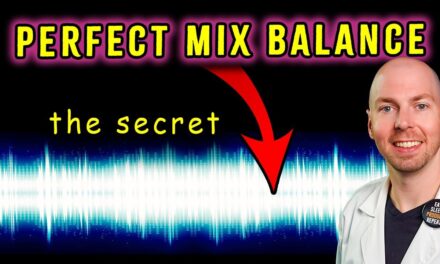
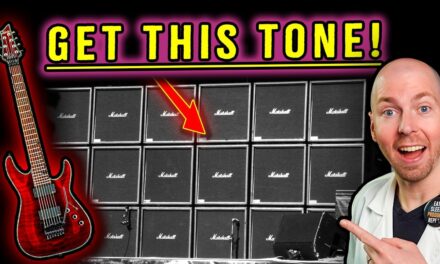
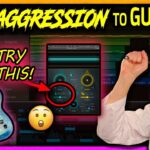

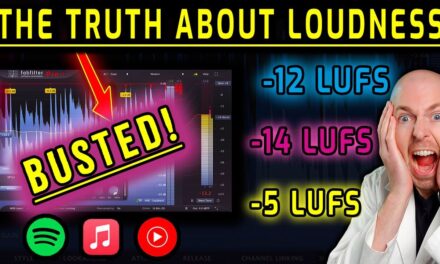

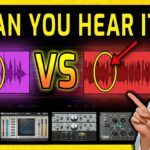








![ULTIMATE Guide to MIXING CLEAN VOCALS for METAL and ROCK [Like Periphery, Tesseract]](/blog/s/img/wp-content/uploads/2020/07/18-Ultimate-guide-to-clean-vocal-mixing-rock-metal8b-440x264.png)




